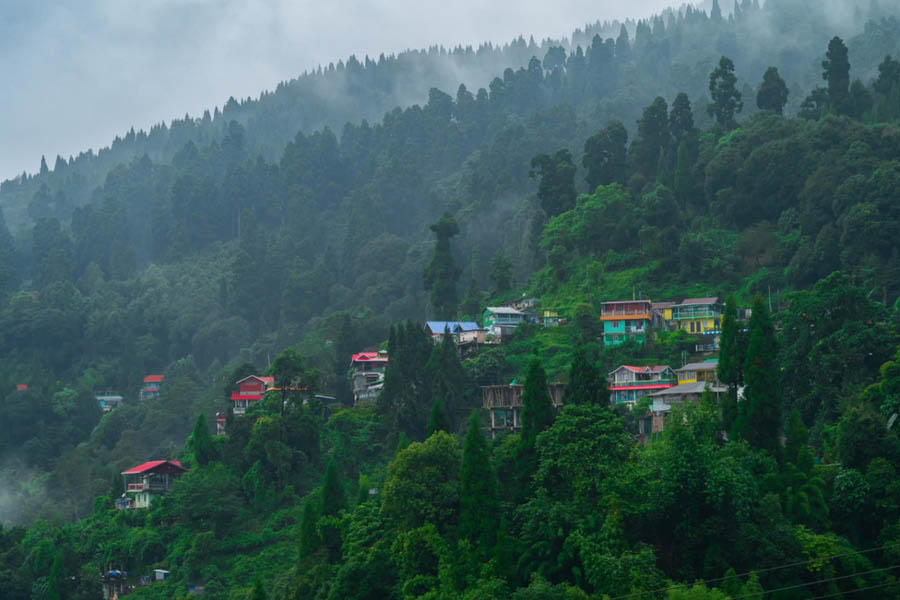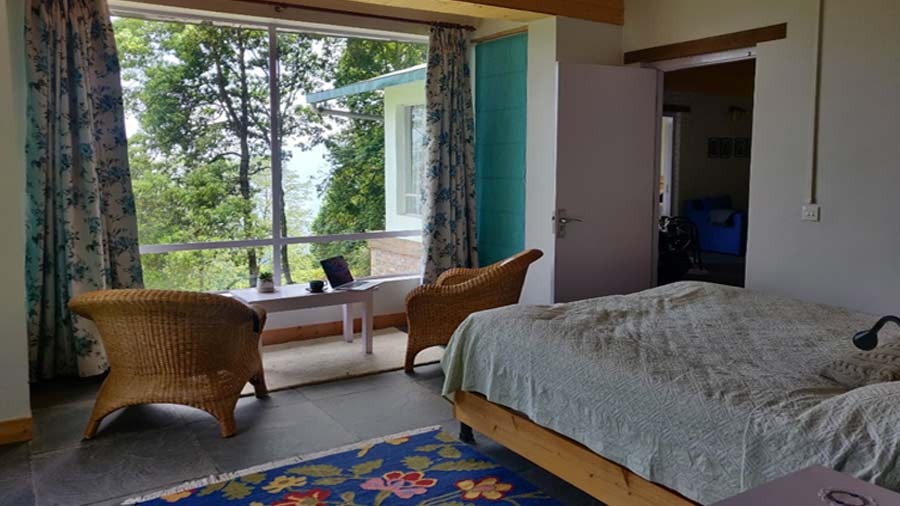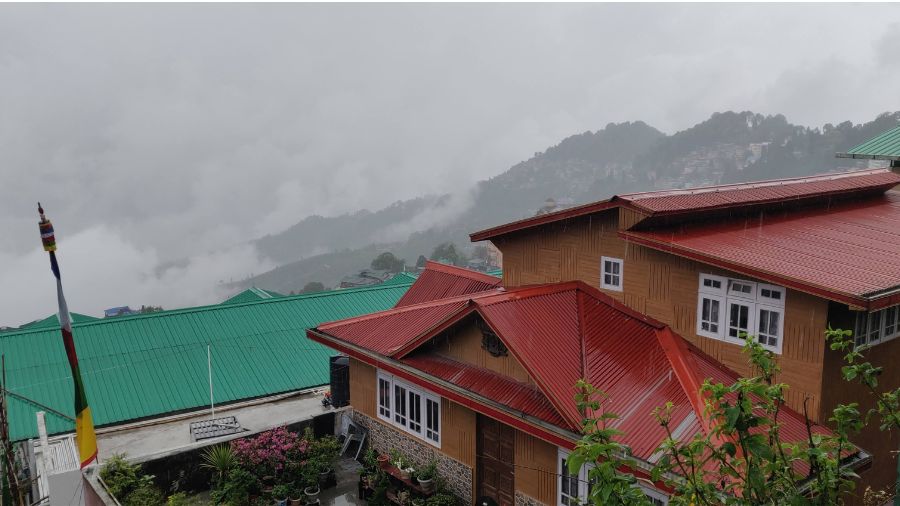It’s the 29th of June and I’ve read that the monsoon clouds have spread far and wide after tethering above large swathes of land, denying any relief to seared souls for weeks. Well, a different story here in Darjeeling. Absolute baloney, I’d say if the IMD declares there’s deficit rainfall in our parts. We haven’t seen blue skies in days. Vitamin D capsules are de rigueur these times.
By mid-May, our rain gear was out — the Wellies (mine is a deep blue with floral motifs and husband’s, well, black) and the raincoats and umbrellas. And the prep began — cleaning drains and culverts and removing leaf litter that falls abundantly on our tinned roof and on to the gutters. Most of this operation is spearheaded by Mr. Singh. My rubber footwear is for trips to the local market to wade through puddles at the cost of being labelled “Anglo” (the local slang for fair-skinned foreigners) because apparently only they wear Wellies in public.
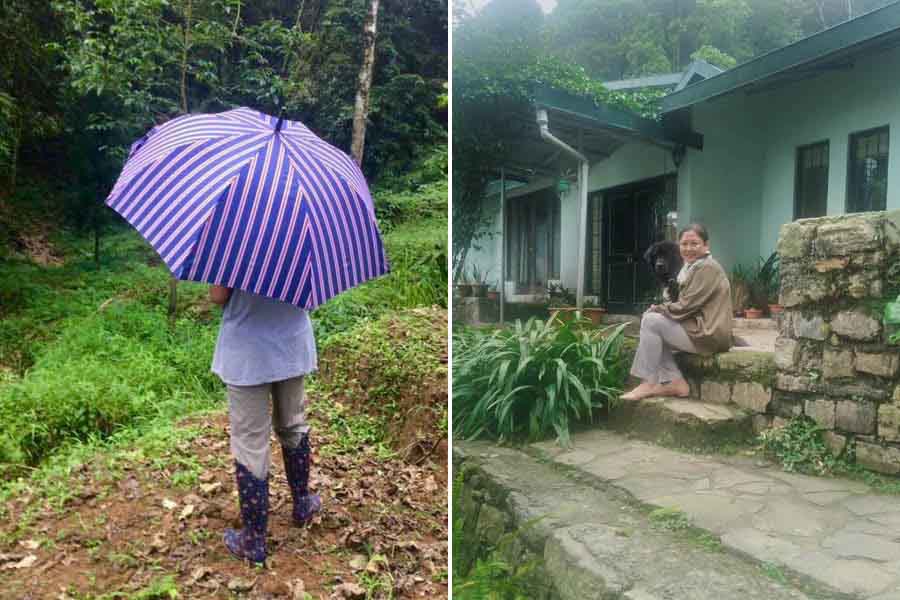
By mid-May this year, the (right) author’s rain gear, including her blue Wellies, were out All photos courtesy Mridula Chettri Singh
When the mist starts rolling in and up, wrapping us in a wet grey haze, we know the showers are close at hand. And then the rain clouds start to shed. The rhythmic drops on the tin roofs lull you into deep sleep. Any harder, and it’ll wake you up from your deepest slumber. Beads of mist cover our hair perpetually. Clothes dry quicker in the warmth of the kitchen than on the clothesline. But the rains also carry the gift of green. The plants grow like runners. Each green unalike — bottle, jade, olive, deep sea. It’s lush, vibrant and healing. And among them the flamboyant begonias and fluorescent hydrangeas. There are peach-laden trees, corn in the barris (cultivated terraces), tendrils of iskoos (chayote/squash) and pumpkin snaking up the trellis, timmur peppercorns on the trees (Nepali-Sichuan peppercorn). And the first signs of dalle (chilli) plant coming alive (An aside: I assert that the dalle is the emperor among chillies, hence Akabare khorsani). It is The Covenant of Water, the book I read just as the wet season kicked in.

Monsoon brings its bounty — from hydrangeas to peaches, plums and timmur
The rains bring us a bounty of fresh produce — some grown, others foraged. Our farm, Kaleege House, borders the Senchal Wildlife Sanctuary. On days when the rains ease, villagers make their way into the forest to forage for ningro (fiddlehead fern) and a variety of mushrooms while I wait for them to return, not venturing there myself. Farm life came to me late so there are still things I can’t nudge myself to do, like wading into a wet forest and battling leeches even if once in a while. If they’ve leeched up to me, I do indulge them before dishing out the salt treatment.
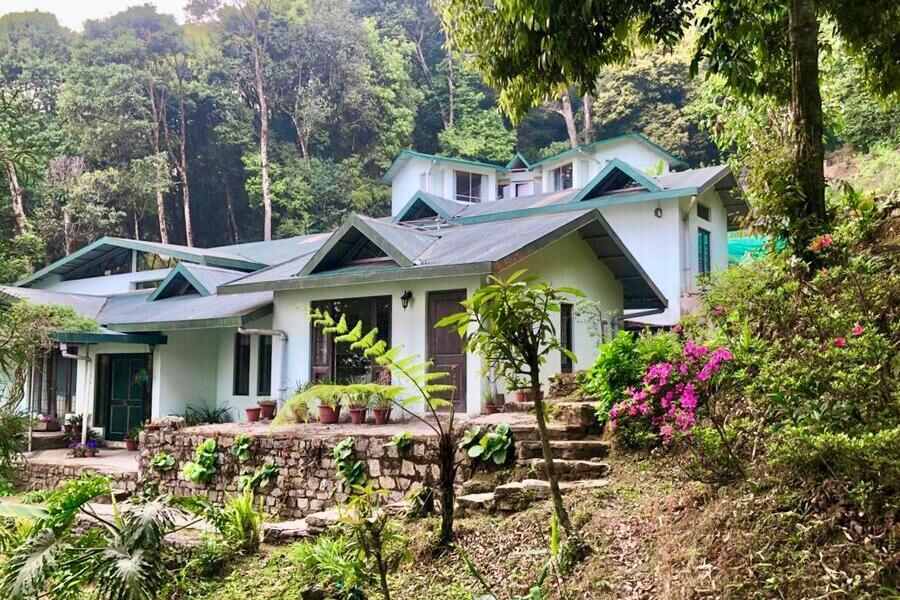
Kaleege House borders the Senchal Wildlife Sanctuary
So between troubleshooting during monsoons — leaks and leeches — there’s a fair bit of reading, some armchair travelling, and a lot of cooking. Here are some staples you could try too if you can get your hands on the ingredients or ask for if you are travelling to the Himalayan regions:
Kakra (cucumber) ko achaar
As a ‘cucumber snob’, I’d say the Darjeeling variety is the best, probably heirloom because these weigh upwards of 1kg up to 3-4kg, have the most bite-into pulp, get covered in cucumber dew when you cut a slice and tastes just as good if you sprinkle salt and chilli or make it into a salad (my mother’s recipe that I have grown up savouring). Having said that, after the rains I make the salad with any variety of cucumber I find.
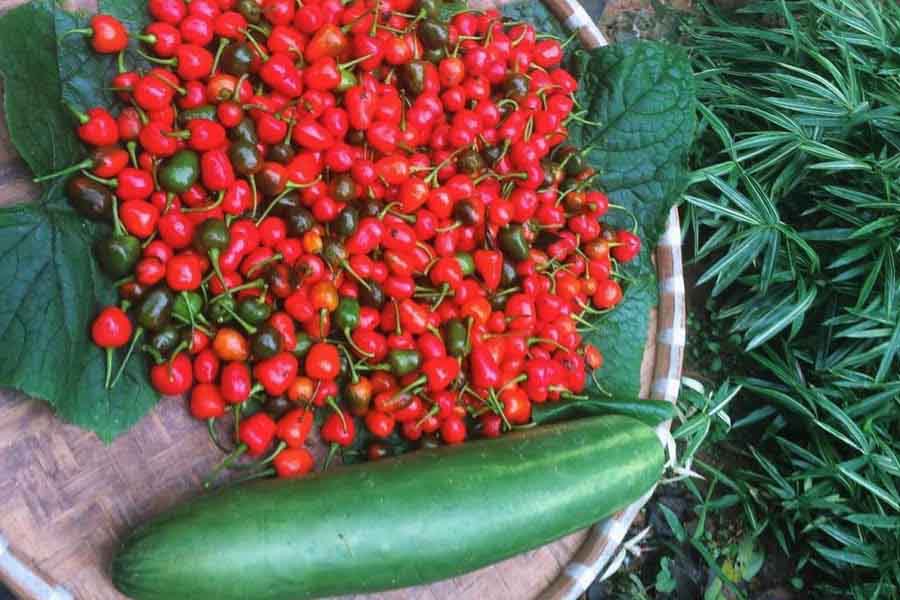
Dalle chilli and Darjeeling cucumber
What you need:
· Cucumber: 400 gm
· Salt, to sprinkle and taste
· Roasted sesame seeds: 1 tbsp, ground
· Roasted peanuts: 1 tbsp, ground
· Lime juice: 2 tbsp
· Finely chopped green chillies or green dalle (optional)
· Mustard oil: 2 tbsp
· Fenugreek/methi seeds: 1/2 tsp
· Dried red chilli: 1, broken into two
· Turmeric (a pinch)
Tossing the salad: Cut the cucumber into thick slices, sprinkle salt and let it rest for 20 mins. Drain the excess water. Into a mixing bowl toss the cucumber, sesame seeds, roasted peanuts, green chillies, lime juice and salt. Heat oil, add dried red chillies and methi. Switch off the heat as soon as the seeds splutter, add the turmeric and pour the oil over the cucumber mix. Serve as is if you’re blessed to be in a cool place like me, or refrigerate just till it doesn’t freeze your jaws.
Ningro (fiddlehead ferns) with tama (bamboo shoots)
For this you’ll have to travel to where ningro is available. Actually, of late I’ve seen them in supermarkets too. They are greens with a stem coiling into curled fronds. Growing up, it wasn’t one of my favourites but then, even as I loathe to admit, some things you learn to truly appreciate with age. Bamboo shoots, however, are my all-time favourite. You can ferment, pickle, toss them into soups, add them to stir-frys, meats or simply bung them in mustard oil, splutter nigella seeds, add turmeric and salt.

Ningro with tama
What you need:
· A bunch of ningro
· Salt to taste
· Lime: 1 tsp
· Mustard oil: 2 tbsp
· Mustard seeds: 1 tsp
· Dried red chilli: 1
· Onion: medium, sliced
· Turmeric: ½ tsp
· Bamboo shoots: sliced, 100 gms (you can use tinned, fresh or fermented)
Forest to plate: Break the fronds and tender parts of the stems into 2 inch-long pieces. Wash thoroughly. Boil them in water with salt and lemon for around 5 mins or till tender. Drain and immediately toss them into cold water to retain freshness and colour. Heat oil, add chilli and mustard seeds. Add the sliced onion and cook till translucent. Then add the bamboo shoots, turmeric and salt and cook for another 5 mins. Add the ningro and cook on low heat for 10 mins or until tender. Enjoy with warm plain rice, biting into fresh green chillies between mouthfuls. This is the in-house monsoon special.
Kalunge Cheu (mushrooms)
Just last week our ‘Lady Friday’ walked in early morning, beaming, “Guess what I’ve got?” Well, it was mal ko cheu that she had foraged a while earlier. Mr. Singh is sceptical of mushrooms grown in the wild. (I don’t know of a word for mushrooms in Punjabi, which I deduce is the reason why he doesn’t get umami). Simply sautéed with garlic and onions, my lunch was umami in every grind, the mouthfeel divine. Among the mushrooms, we prize the Kalunge. At our farm, there’s just one spot where it mushrooms overnight around the end of August, and, if we aren’t alert, some early riser who also has eyes on it is likely to snap them up before daylight hits our pillow. Here’s a recipe using Kalunge, but you could also try this with oyster mushrooms that are now easily available. Oyster mushrooms, though, release a lot of water and taste great with the addition of onions, tomatoes and Asian chives.
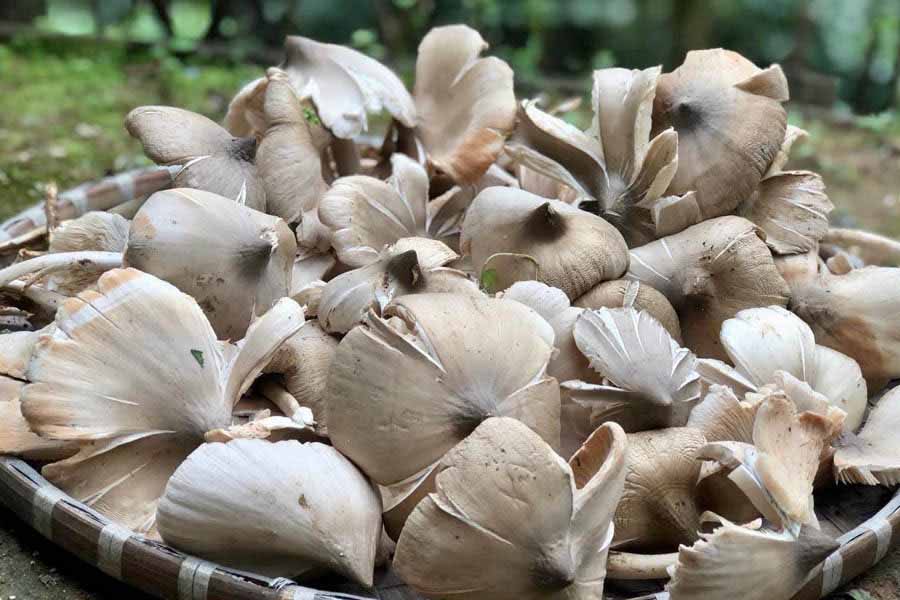
Foraged Kalunge Cheu
What you need and how to cook:
· Kalunge mushrooms shredded (as much as you can lay your hands on)
· Butter
· Chopped garlic
· Salt and chilli
Creating mushroom magic: Heat the butter with a dash of any neutral oil, add the garlic and cook till fragrant. Add the mushrooms and chilli and saute for around 10 mins. Then add the salt, saute in low heat for another 5 mins. Enjoy with plain rice or roti with a side of dalle-timmur chutney (the recipe for the latter is for another time).
Mridula Chettri Singh runs Kaleege House (www.kaleegehouse.com + 91 83450 08283, + 91 85097 41680), a farmstay in Takdah Cantonment, Darjeeling
